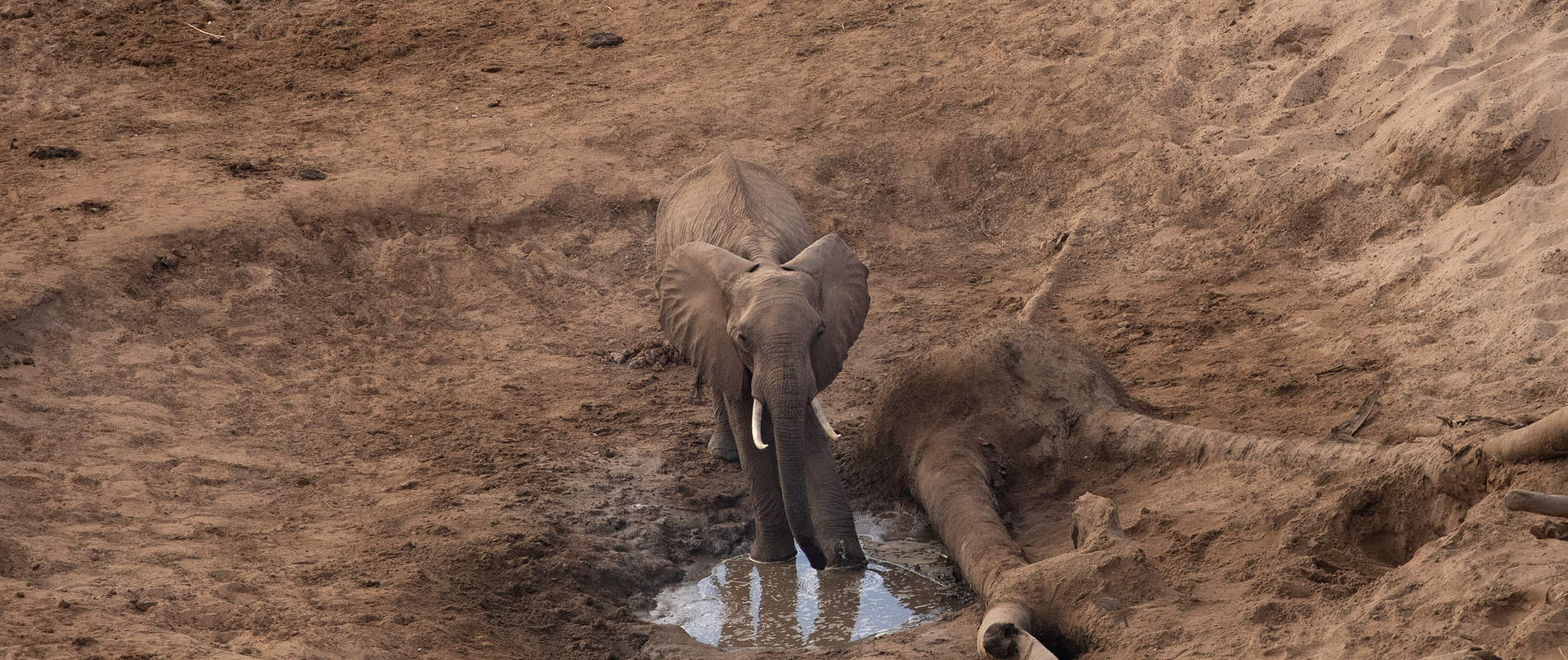Protecting Kenya’s great spaces and giant creatures takes teamwork, dedication, and excellent skills of observation. This arrowed bull was given a second chance because of a chain reaction, beginning with the sighting of human footprints, then the discovery of animal tracks that indicated something amiss, and finally through an entirely aerial treatment in the heart of Tsavo.

Our pilot spotted tracks that suggested a wounded elephant was dragging its leg
On 17th March, KWS reported finding human tracks entering the northern sector of Tsavo East. Given its location on the Tiva River, this area was once a favourite haunt of poachers and other perpetrators. While aerial and ground patrols had effectively eliminated illegal activities in this area, constant vigilance is required to keep it at bay.

The following day, he found the injured elephant trying to find relief in a puddle
Responding to this intelligence, our fixed-wing pilot conducted a targeted patrol in the area. He found a harbour on the south bank of the river. It was outfitted with lots of snares, cooking equipment, and other signs of life. While the men responsible remained elusive, ground teams were able to move in and destroy their home base. Moving forward, we will place extra focus on this sector of the park.

The SWT helicopter mobilised an aerial vet treatment
Meanwhile, the pilot had another concern: On patrol, he had noticed unusual elephant tracks that indicated the animal was dragging his leg. Recognising this as a telltale sign of injury, he did an extended patrol in the area the following day. The pilot relocated the tracks and searched the general area where they were leading. After quite some time, he found an elephant standing in a puddle. He was spraying water on his leg and swinging it back and forth, clearly trying to keep as much weight off it as possible. Closer inspection revealed a wound on his front left ankle joint.

Fortunately, the treatment went off without a hitch
While the aircraft circled above, the SWT helicopter mobilised to collect Dr Limo of the SWT/KWS Tsavo Mobile Vet Unit. The patient was located in the heart of the park, far from any roads and surrounded by a sandy river bed, so the whole treatment would have to be done from the air.

The wound was thoroughly cleaned, treated, and medicated
Fortunately, the entire operation unfolded like clockwork. The helicopter shepherded the bull into an open area, where Dr Limo was able to dart him from the air. As soon as he went down, the team landed and commenced treatment. The arrow had gone between two bones and into the ankle joint, leaving a large, penetrating wound in its wake. This injury was badly infected and was clearly causing him a lot of pain.
The team thoroughly cleaned out the wound and packed it with green clay, a natural substance that expedites healing. Finally, they administered long-acting antibiotics and anti-inflammatories, which will help the bull recuperate and manage his pain. With treatment complete, Dr Limo reversed the anaesthetic and the team took flight. While they hovered overhead, the bull lumbered to his feet and moved off into the wilderness.
As the bull recovers in the wild, our eyes in the sky and boots on the ground will continue to keep an eye on him and this vast habitat he calls home.
